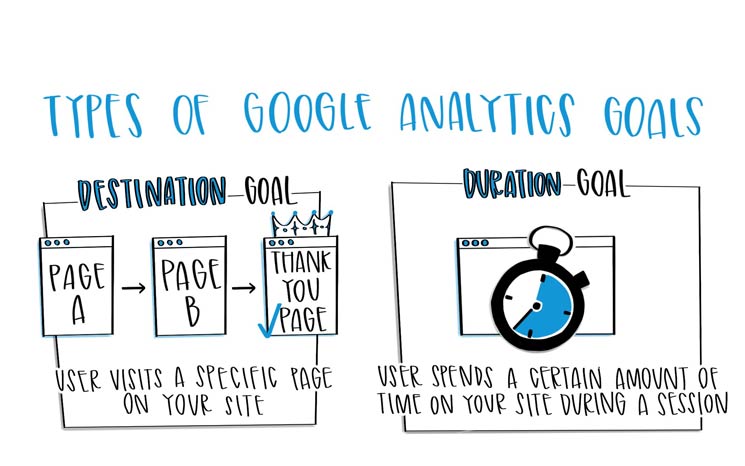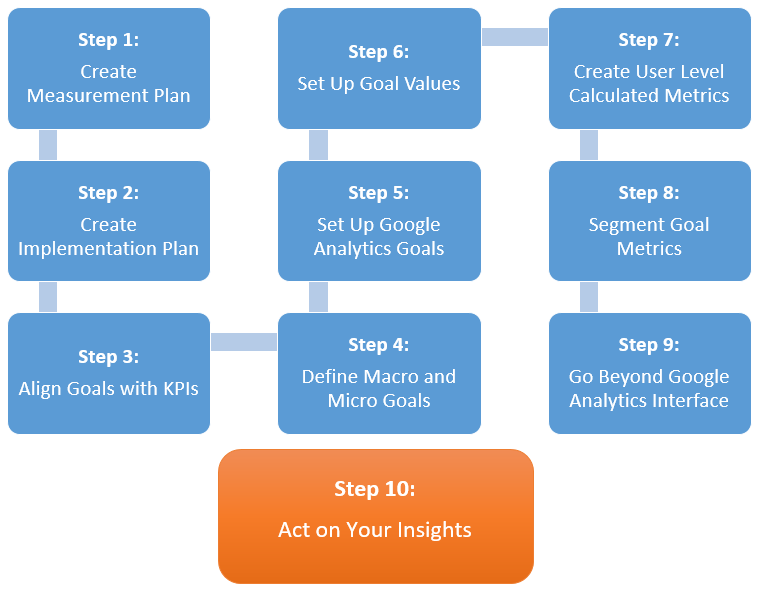What Data Is Google Analytics Goals Unable to Track and Why
What Data Is Google Analytics Goals Unable to Track and Why
Blog Article
Discover the Limitations of Google Analytics Goals: Revealing the Information Kind That Remain Untrackable
As companies significantly depend on data-driven decision-making, comprehending the restrictions of tools like Google Analytics becomes extremely important. While Google Analytics Goals deal useful understandings into customer interactions, there exist data types that thwart tracking, presenting obstacles to a detailed understanding of user habits.
Incomplete Individual Journey Tracking
Insufficient user trip monitoring within Google Analytics can hinder the ability to accurately analyze individual actions. When the individual journey is not totally tracked, there are voids in the data that protect against a comprehensive understanding of just how users communicate with a web site. This absence of understanding can lead to missed out on chances for optimization and improvements to the customer experience.
One typical concern with incomplete customer trip tracking is the inability to see the complete path that individuals take before finishing an objective or leaving the site. Without this details, it is testing to identify where customers may be experiencing obstacles or rubbing points that prevent them from transforming. Additionally, incomplete tracking can cover the influence of certain marketing initiatives or site modifications on user habits.
To address this restriction, it is critical to set up appropriate tracking devices within Google Analytics to capture the entire individual journey. This might entail establishing occasion monitoring, goal funnels, or using tools like Google Tag Manager to guarantee that no important communications go unrecorded. By getting a comprehensive sight of the customer trip, internet site proprietors can make more enlightened choices to improve user engagement and drive conversions.
Acknowledgment Difficulties
Navigating through acknowledgment difficulties in Google Analytics needs an extensive understanding of just how different touchpoints add to the overall conversion process. Acknowledgment difficulties arise from the intricacy of contemporary customer journeys, where users connect with several networks prior to transforming. Google Analytics gives numerous acknowledgment versions like initial touch, last touch, and straight, each using a various point of view on exactly how credit is appointed to touchpoints along the conversion course. Nonetheless, these designs may not constantly accurately show real influence of each touchpoint on the conversion.
One typical attribution challenge is the trouble in associating conversions to the proper source, specifically in instances where individuals connect with multiple channels prior to converting. This can result in mistakes in figuring out which marketing initiatives are driving the most conversions. Additionally, cross-device tracking postures another acknowledgment obstacle, as customers often change in between devices during their journey, making it challenging to track their interactions effortlessly. Marketers must thoroughly examine and interpret acknowledgment information to make educated decisions and maximize their advertising strategies properly.
Offline Conversions
Given the difficulties associated with associating conversions precisely in online channels, the measurement of offline conversions presents a significant possibility for marketers looking for a much more detailed understanding of their customers' trip. Offline conversions describe activities that clients absorb the real world, such as making purchases in brick-and-mortar shops or over the phone, attending events, or involving with published materials - what data is google analytics goals unable to track. These conversions are essential for organizations that operate both online and offline, as they give useful understandings into the efficiency of advertising projects across numerous touchpoints
Tracking offline conversions traditionally postured a considerable difficulty for marketing professionals, as it was testing to connect these activities back to certain on the internet interactions accurately. With innovations in modern technology, such as the assimilation of CRM systems, special identifiers, and voucher codes, services can now bridge the gap in between online and offline information to acquire a much more all natural sight of client habits. By successfully measuring like this offline conversions, marketing professionals can enhance their approaches, designate sources a lot more successfully, and eventually enhance the overall consumer experience.
Cross-Device Tracking
Cross-device tracking plays a critical duty in recognizing the interconnected nature of consumers' electronic communications throughout multiple gadgets. In today's omnichannel world, where users effortlessly switch over official website in between tablet computers, smartphones, and desktop computers, tracking their actions throughout these tools is crucial for marketers to acquire a comprehensive view of their customer journey.

Additionally, privacy issues and regulations such as GDPR and CCPA have further difficult cross-device monitoring. With customers demanding even more control over their information and boosted restrictions on monitoring technologies, marketing experts need to discover privacy-compliant and ingenious methods to link individual interactions across tools.
Dynamic Content Interaction
Understanding individual interaction with dynamic material is essential in optimizing electronic advertising and marketing approaches for improved target market interaction. Dynamic material refers to internet site elements that alter based on individual habits, choices, or various other variables, providing an individualized experience. Tracking customer interactions with vibrant content positions obstacles for traditional analytics tools like Google Analytics.
While Google Analytics can track basic communications like clicks and find more information page views, it may battle to catch even more nuanced involvements within vibrant web content. what data is google analytics goals unable to track. Metrics such as time invested in certain vibrant components, float activities, or communications within pop-ups are typically not quickly measurable making use of standard monitoring approaches. This restriction prevents marketing experts' capability to completely realize how users are involving with dynamic web content and tailor their techniques accordingly

Final Thought
Finally, Google Analytics objectives have constraints in tracking incomplete individual trips, attributing conversions accurately, recording offline conversions, tracking cross-device interactions, and gauging dynamic material engagement. These constraints highlight the relevance of exploring added monitoring techniques and tools to get a more comprehensive understanding of customer actions and conversions past what Google Analytics can provide.
While Google Analytics Goals deal important understandings into customer interactions, there exist data kinds that thwart tracking, posturing difficulties to an extensive understanding of customer behavior.Incomplete individual journey tracking within Google Analytics can prevent the capacity to properly assess customer behavior. When the customer journey is not totally tracked, there are spaces in the information that avoid an extensive understanding of how customers communicate with a site.One typical problem with incomplete user trip tracking is the failure to see the complete path that individuals take in the past completing an objective or leaving the site. By getting a detailed sight of the individual journey, site owners can make more informed decisions to enhance individual involvement and drive conversions.
Report this page